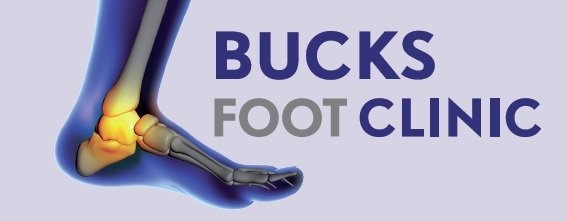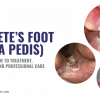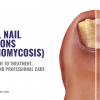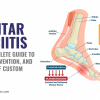
Why Do My Heels Crack in Winter? (And How to Fix It Fast)
Every winter, millions of people across the UK experience the uncomfortable and sometimes painful reality of cracked heels. That dry, rough skin that develops into deep fissures isn’t just a cosmetic concern—it can lead to bleeding, infection, and significant discomfort that affects your daily activities. Understanding why this seasonal problem occurs and knowing the most effective cracked heels treatment winter strategies can transform your foot health during the colder months. This comprehensive guide explores the science behind winter heel cracking, provides proven solutions, and explains why professional podiatric care delivers results that home remedies for dry feet simply cannot match.
The Science Behind Winter Heel Cracking
Winter creates a perfect storm of conditions that assault the delicate skin on your heels. The combination of cold outdoor air and dry indoor heating strips moisture from your skin at an accelerated rate. Unlike other body parts, your heels lack oil glands, relying entirely on sweat glands for natural moisture. This biological limitation makes them particularly vulnerable to environmental stressors.
When temperatures drop, your body naturally reduces blood flow to extremities to conserve core heat. This decreased circulation means less oxygen and fewer nutrients reach your heel skin, compromising its ability to maintain healthy cell turnover and repair minor damage. Additionally, the thicker skin on your heels—designed to withstand pressure from walking—becomes inflexible when dry, leading to cracks that deepen with continued stress.
The structural anatomy of heel skin compounds these issues. The fat pad beneath your heel skin, which normally provides cushioning, can thin with age or repeated pressure. When this natural shock absorber diminishes, your heel skin bears more direct force with each step, accelerating the formation of cracks and fissures during winter’s harsh conditions.
Indoor heating systems, whilst keeping us warm, create desert-like humidity levels in our homes. Most UK homes drop to 30-40% humidity in winter, well below the 50-60% ideal for skin health. This constant exposure to dry air accelerates transepidermal water loss, leaving heel skin progressively more dehydrated throughout the season.
Why Winter Makes Everything Worse
Temperature Extremes and Skin Barrier Function
The dramatic temperature variations between heated indoors and cold outdoors cause repeated expansion and contraction of skin cells. This thermal stress weakens the skin’s barrier function, allowing moisture to escape more readily whilst making it harder for moisturisers to penetrate effectively. The protective lipid layer that normally seals in moisture becomes compromised, creating a vicious cycle of increasing dryness.
Footwear Changes
Winter footwear contributes significantly to heel problems. Closed shoes and boots trap moisture from perspiration whilst simultaneously rubbing against dry skin. The combination of friction and maceration creates ideal conditions for heel cracks to develop and worsen. Additionally, thick winter socks, whilst warm, can increase pressure on already compromised heel skin.
Reduced Foot Care Attention
During winter months, feet remain hidden beneath socks and shoes, receiving less attention than during sandal season. This “out of sight, out of mind” phenomenon means problems develop unnoticed until they become painful or severe. Many people reduce their foot care routine just when their feet need extra attention most.
Lifestyle Factors
Winter typically brings reduced water intake, as people feel less thirsty in cold weather. This systemic dehydration affects skin health throughout the body, with the already vulnerable heels suffering disproportionately. Additionally, comfort eating during colder months often includes foods high in salt and processed sugars, which can increase inflammation and compromise skin healing.
How to Prevent Cracked Heels in Winter
- Maintain Optimal Indoor Humidity
Invest in a hygrometer to monitor home humidity levels, aiming to maintain 45-55% humidity throughout winter. Use humidifiers in bedrooms and living areas where you spend most time. Even simple measures like drying clothes indoors or keeping houseplants can help maintain moisture in the air. This environmental modification benefits not just your heels but your overall skin and respiratory health.
- Hydrate From Within
Increase water intake consciously during winter months, aiming for at least 2 litres daily. Warm beverages like herbal teas count towards hydration goals whilst providing comfort in cold weather. Include omega-3 rich foods such as oily fish, walnuts, and flaxseeds in your diet, as these essential fatty acids support skin barrier function from the inside out.
- Choose Winter-Appropriate Footwear
Select boots and shoes with breathable materials that allow moisture to escape whilst protecting from cold. Ensure proper fit with adequate room for thick socks without creating pressure points. Rotate footwear daily to allow complete drying between wears. Consider moisture-wicking sock liners beneath wool socks for optimal moisture management.
- Establish a Protective Barrier Routine
Apply a thick, occlusive moisturiser to your heels immediately after bathing whilst skin is still damp. Look for products containing urea (10-25%), which both moisturises and gently exfoliates dead skin. Layer petroleum jelly or lanolin-based products over moisturiser at night for intensive treatment. Wear cotton socks after application to enhance absorption and protect bedding.
- Regular Gentle Exfoliation
Remove dead skin buildup weekly using a pumice stone or foot file on damp (never dry) skin. Work gently to avoid creating micro-tears that could worsen cracking. Follow immediately with moisturiser application. Avoid aggressive removal of hard skin, which can trigger increased callus formation as a protective response.
- Temperature Management
Avoid hot baths and showers, which strip natural oils from skin. Use lukewarm water and limit bathing time to 10 minutes. When coming indoors from cold, resist the temptation to place feet directly near heaters or radiators, as rapid temperature changes stress skin further.
Why Professional Podiatry Beats Home Remedies
Clinical Assessment and Diagnosis
What appears to be simple dry skin might actually indicate underlying conditions such as athlete’s foot, psoriasis, eczema, or thyroid disorders. The HCPC-registered podiatrists at Bucks Foot Clinic, all holding B.Sc. Podiatric Medicine degrees, possess the clinical training to differentiate between various causes of heel cracking and identify when medical intervention is necessary.
Their professional assessment includes evaluating circulation, checking for neuropathy, and examining skin integrity throughout the foot. This comprehensive approach ensures that treatment addresses root causes rather than just visible symptoms, providing lasting relief rather than temporary improvement.
Professional-Grade Treatments
Clinical podiatry offers access to medical-grade treatments unavailable over the counter. Professional-strength urea creams (up to 40%), prescription emollients, and specialised wound care products can achieve results impossible with home remedies for dry feet. The podiatrists at Bucks Foot Clinic use sterile instruments and clinical techniques to safely remove thickened skin without causing trauma or infection.
Their bespoke orthotic service addresses biomechanical factors contributing to heel pressure and cracking. By redistributing weight and reducing excessive force on vulnerable areas, custom orthotics prevent recurrence whilst promoting healing of existing fissures.
Safe Debridement Techniques
Professional debridement removes dead skin layers safely and effectively, allowing moisturisers to penetrate properly. Unlike home methods that risk over-removal or injury, clinical debridement is performed with precision instruments under proper lighting and magnification. This controlled approach stimulates healthy skin regeneration without triggering defensive callus formation.
Identification of Contributing Factors
HCPC-registered podiatrists evaluate your complete foot health picture, identifying factors you might not recognise as relevant. Gait abnormalities, structural foot problems, or systemic health issues affecting skin integrity can all contribute to chronic heel cracking. Professional assessment ensures comprehensive treatment rather than symptom management alone.
Evidence-Based Treatment Plans
Rather than trial-and-error with various home remedies, professional podiatrists provide evidence-based treatment protocols proven effective through clinical research. They can prescribe combination therapies, recommend specific products suited to your skin type, and adjust treatment based on response—advantages impossible with self-treatment.
How to Fix Cracked Heels Fast: Immediate Solutions
- Emergency Intensive Treatment
For severe cracking requiring rapid improvement, begin with a 10-minute lukewarm foot soak using mild soap. Pat dry gently and apply a thick layer of 20% urea cream, covering with cling film and cotton socks. Leave overnight and repeat for three consecutive nights. This intensive protocol can dramatically improve heel condition within 72 hours.
- Seal Deep Fissures
Clean deep cracks with saline solution (1 teaspoon salt in 500ml boiled, cooled water). Apply liquid bandage or medical-grade skin adhesive to seal fissures, preventing further deepening and reducing pain. Cover with hydrocolloid dressings that maintain moisture whilst protecting from infection. Change dressings daily until healing progresses.
- Pain Management Strategies
For painful cracks, apply numbing cream containing lidocaine before activities requiring extended standing or walking. Use gel heel cups or cushioned insoles to reduce pressure on affected areas. Elevate feet when resting to reduce inflammation and promote healing circulation.
- Rapid Moisture Restoration
Create an intensive moisture treatment by mixing equal parts vegetable glycerin and rose water, applying liberally before bed. Layer thick moisturiser over this base, then petroleum jelly, before covering with socks. This triple-layer approach rapidly restores moisture to severely dry skin.
- Address Infection Signs
If cracks show redness, warmth, swelling, or discharge, indicating possible infection, clean with antiseptic solution and apply antibiotic ointment. Cover with sterile dressings and seek professional assessment within 24-48 hours. Never ignore signs of infection, as heel fissures provide direct entry points for bacteria.
- Lifestyle Modifications for Fast Results
Temporarily reduce standing time and high-impact activities whilst healing occurs. Wear supportive, well-cushioned footwear even indoors. Increase protein intake to support skin repair, and consider supplements like vitamin E, zinc, and biotin, which promote skin health.
Advanced Treatment Strategies
Understanding Skin Cycling
Healthy heel skin naturally cycles through renewal every 28-40 days. Cracked heels treatment winter protocols should align with this cycle, using gentle exfoliation early in the cycle and intensive moisturising during the regeneration phase. Professional podiatrists can assess where you are in this cycle and optimise treatment timing accordingly.
The Role of Occlusives vs Humectants
Effective heel treatment requires understanding different moisturiser types. Humectants (glycerin, hyaluronic acid) draw moisture into skin but can actually worsen dryness in low-humidity environments by pulling moisture from deeper skin layers. Occlusives (petroleum jelly, mineral oil) seal in moisture but don’t add hydration. The most effective winter treatments combine both, applied in the correct order: humectants first, then occlusives.
Biomechanical Considerations
Heel cracks often follow predictable patterns based on how you walk. Excessive pronation creates lateral heel cracks, whilst supination causes medial fissures. The qualified podiatrists at Bucks Foot Clinic use gait analysis to identify these patterns, creating bespoke orthotics that address underlying biomechanical causes whilst protecting healing skin.
Common Mistakes to Avoid
Over-Exfoliation
Aggressive removal of hard skin triggers a protective response, causing faster, thicker callus formation. Many people mistakenly believe that completely smooth heels are the goal, but some callus provides necessary protection. Professional podiatrists understand the optimal balance between protection and flexibility.
Ignoring Early Signs
Mild dryness and minor cracks are far easier to treat than deep fissures. Beginning treatment at the first signs of dryness prevents progression to painful, bleeding cracks that require weeks of intensive treatment.
Relying Solely on Petroleum Jelly
Whilst petroleum jelly excellently seals moisture, it doesn’t add hydration to already dry skin. Using it alone on cracked heels creates a barrier that prevents both moisture loss and absorption of beneficial treatments. Always apply hydrating products first.
Neglecting Underlying Health Issues
Chronic heel cracking despite appropriate treatment may indicate diabetes, thyroid disorders, or nutritional deficiencies. Professional assessment can identify when medical investigation is warranted, ensuring you receive appropriate systemic treatment alongside foot care.
When to Seek Professional Help
Certain symptoms indicate the need for professional podiatric assessment rather than continued home treatment. Deep cracks that bleed regularly, signs of infection, heel pain that persists despite treatment, or cracking that doesn’t improve after two weeks of intensive home care all warrant professional evaluation.
People with diabetes, peripheral vascular disease, or compromised immunity should seek professional care for any heel cracking, as their increased infection risk and reduced healing capacity make self-treatment potentially dangerous.
Conclusion: Achieving Lasting Winter Heel Health
Cracked heels during winter aren’t inevitable—they’re preventable and treatable with the right approach. Understanding the complex factors creating winter heel problems empowers you to implement effective prevention strategies before cracks develop. When problems do occur, combining appropriate home care with professional podiatric treatment ensures rapid resolution and prevents recurrence.
The key to success lies in consistency and choosing evidence-based treatments over unproven remedies. Your heels endure tremendous stress supporting your body weight through thousands of daily steps. They deserve proper care, especially during winter’s challenging conditions.
Get Professional Treatment at Bucks Foot Clinic
Don’t let cracked heels disrupt your winter comfort. The HCPC-registered podiatrists at Bucks Foot Clinic provide expert assessment and treatment for all severities of heel cracking. All clinicians hold B.Sc. Podiatric Medicine degrees, ensuring you receive care from qualified healthcare professionals who understand the complex factors affecting foot skin health.
Their comprehensive approach includes professional debridement, prescription-strength treatments, and bespoke orthotics when biomechanical factors contribute to recurring heel problems. Rather than struggling with ineffective home remedies, get lasting relief through evidence-based professional care.
Contact Bucks Foot Clinic today:
- Phone: 01494 434366
- Website: www.bucksfootclinic.com
- Address: 18 Woodside Rd, Amersham HP6 6AJ
- Opening Hours: Monday-Friday 9:00-17:00, Saturday 9:00-13:00
Book your assessment today and step confidently through winter with healthy, comfortable heels. Their professional expertise and advanced treatments can resolve even the most stubborn heel cracking, helping you maintain foot health throughout the challenging winter months.







Recent Comments